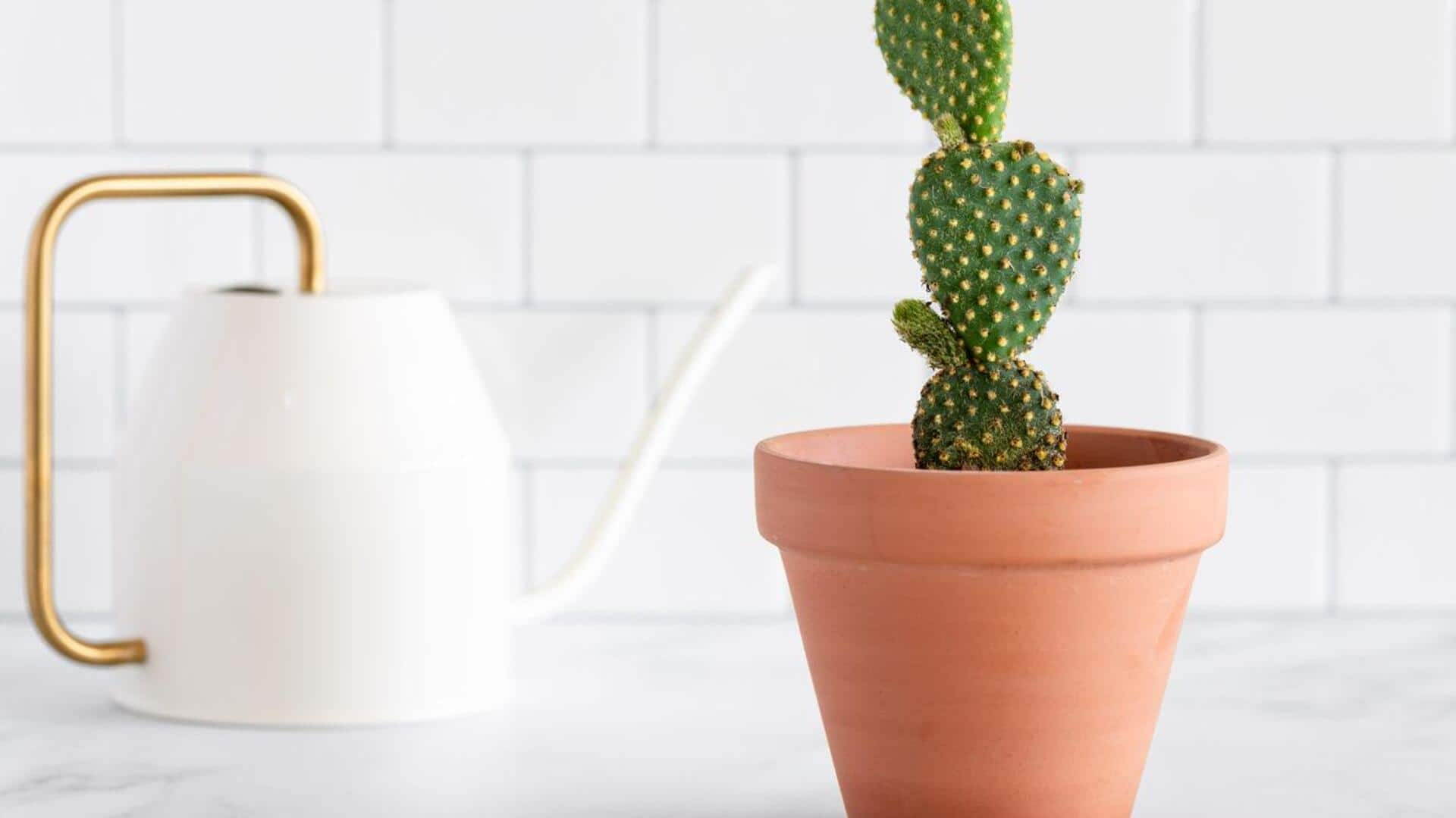
How to grow a pear cactus at home
What's the story
The prickly pear cactus is a hardy plant that survives in dry conditions, making it an excellent option for both beginner and experienced gardeners. It hardly requires any maintenance, grows well in the indoors or outdoors, and makes a unique addition to your gardens or home decor. Here are some practical tips for growing prickly pear cactus at home, making it a one-of-a-kind addition to your space.
Location
Choosing the right location
Selecting the right location is the key to the growth of prickly pear cactus. The plant loves plenty of sunlight, so pick a spot that gets direct sunlight for a minimum of six hours a day. If growing indoors, keep it by a south-facing window. Ensure that the plant gets good air circulation around it to avoid any fungal problems.
Soil
Soil requirements
Prickly pear cactus needs well-draining soil, else it will develop root rot. Sandy or gritty soil mix does the job best. You can either use commercial cactus potting mix or make your own by mixing regular potting soil with sand and perlite in equal parts. This provides proper drainage and aeration.
Watering
Watering guidelines
Watering needs of prickly pear cactus are minimal compared to other plants. Allow the soil to dry out completely between waterings, typically every two weeks during the growing season, and less frequently during winter months. Overwatering can lead to root rot, so it's important not to let the plant sit in waterlogged soil.
Fertilization
Fertilization tips
Fertilizing prickly pear cactus should be done with caution. Ideally, a balanced liquid fertilizer should be used, but don't forget to dilute it to half its strength. This should be done once every month, but only during spring and summer months. These are the months when your prickly pear cactus is in the active growth phase. It's important to stop fertilizing as fall arrives and throughout winter, as that's when the plant is dormant.
Pests
Handling pests and diseases
Though prickly pear cacti are pretty resilient, they may sometimes have problems with pests such as scale insects or mealybugs. Regular checks can help detect such infestations early on. If required, treat infected areas with insecticidal soap but be careful not to overdo it, which could affect beneficial insects as well.